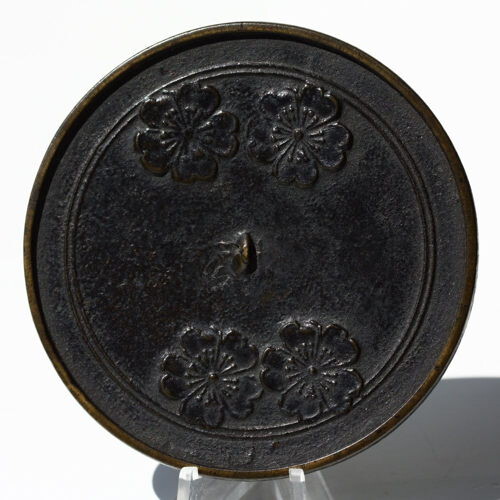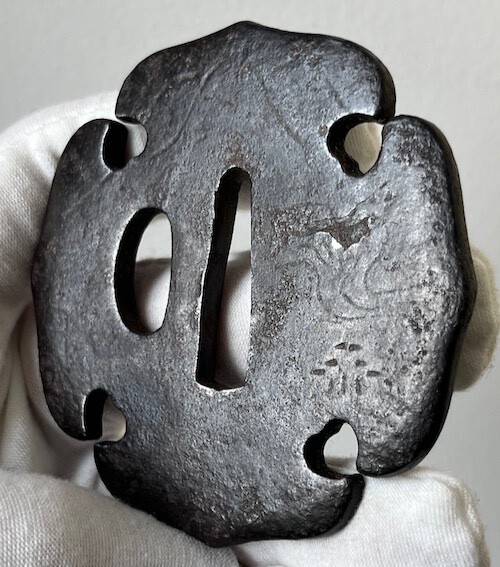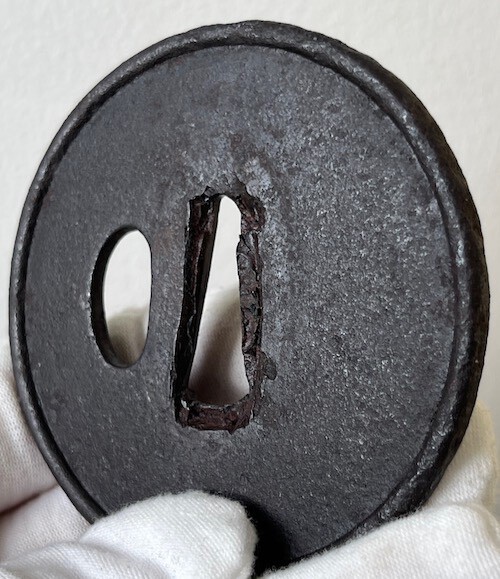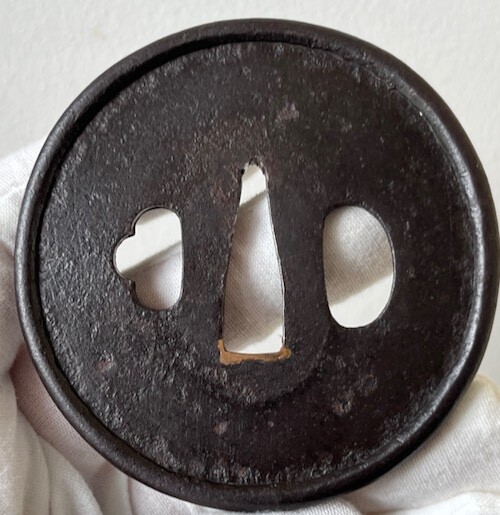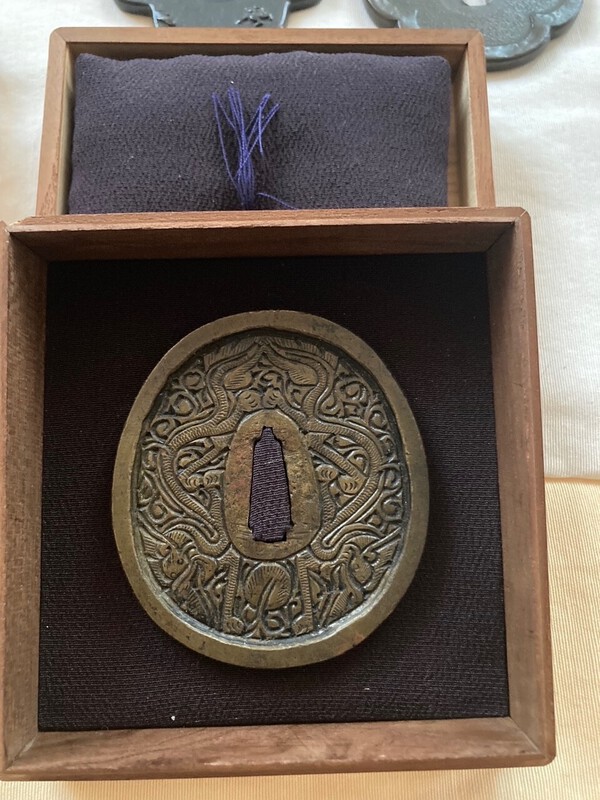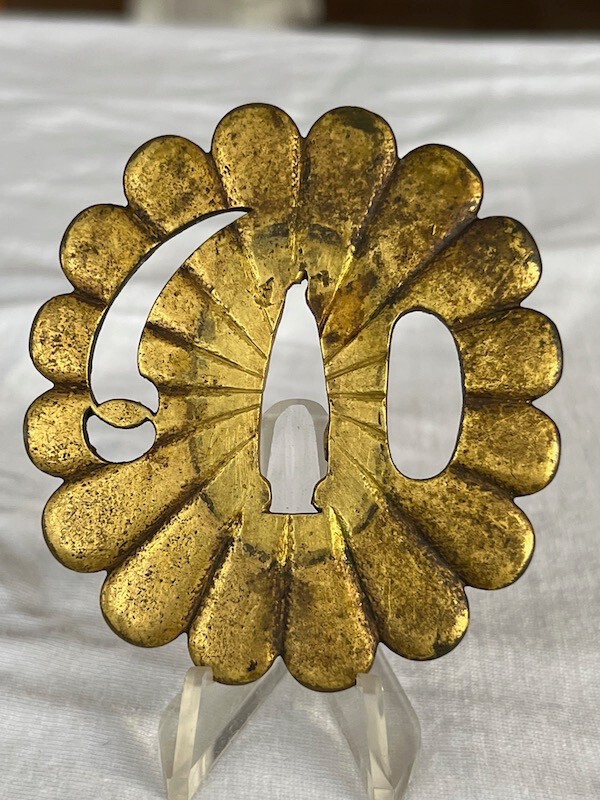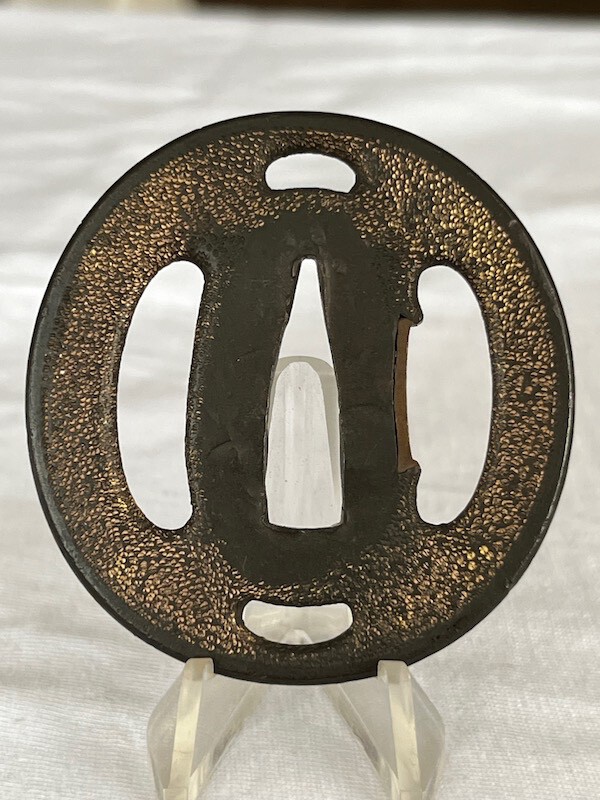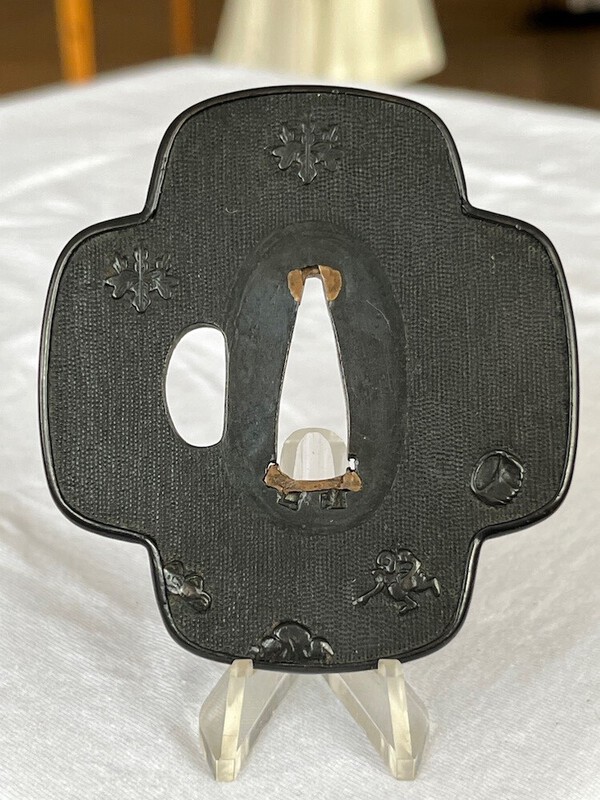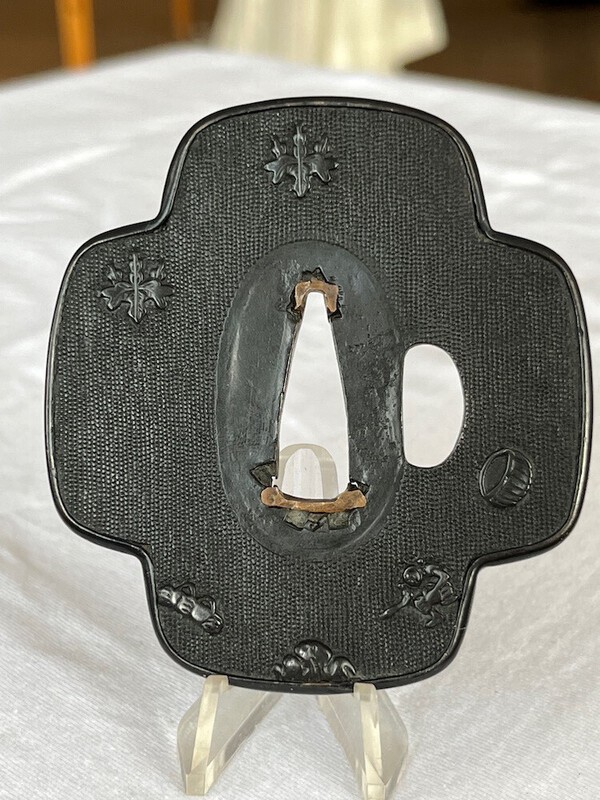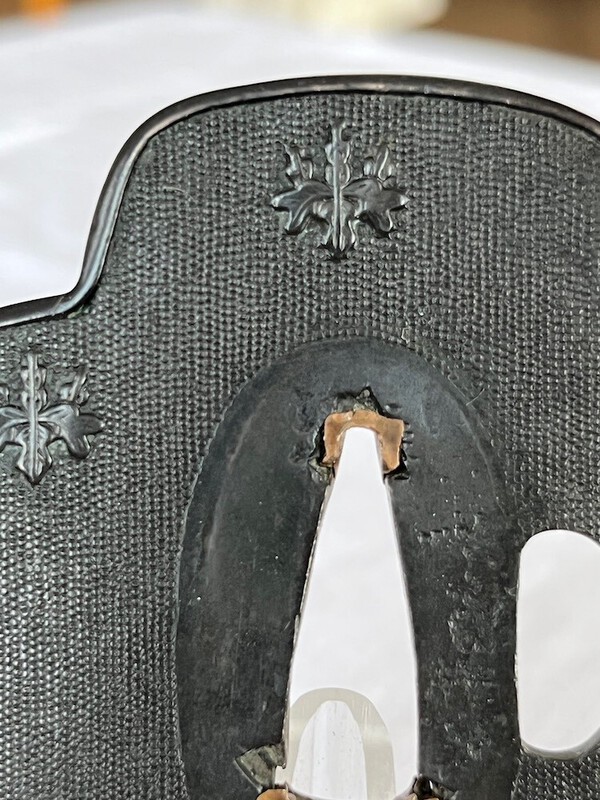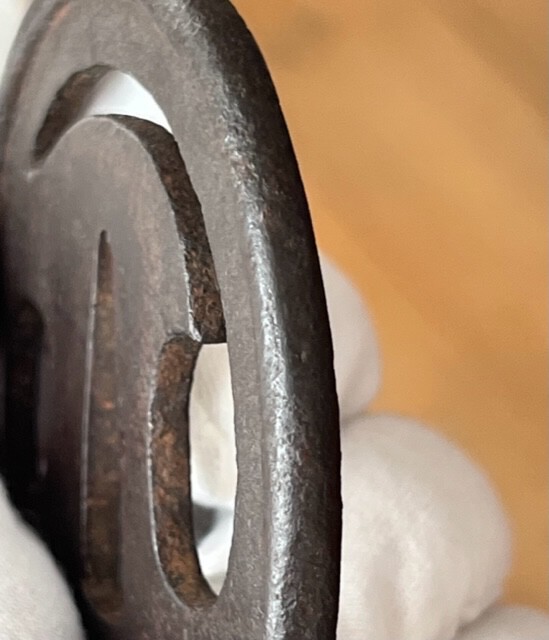-
Posts
3,157 -
Joined
-
Last visited
-
Days Won
26
Content Type
Profiles
Forums
Events
Store
Downloads
Gallery
Everything posted by Marius
-
Measurements will come later for all of these tsuba, but they are wakizashi size. #1 Tsuba wakizashi sized tsuba, iron, some carving. inome and a folding flaw which adds to its charme. Edo. $80 incl. shipping to US/EU #2 Tsuba Katchushi. Simple and charming. Only kozuka hitsu ana. Corrosion evidence on rim in places (see picture) $90 incl. shipping to US/EU #3 Tsuba Katchushi. Simple and charming. $100 incl. shipping to US/EU
-
All tsuba are SOLD, thank you
-
A brass tsuba, 19th c. Qing dynasty with a rare provenance. The front has a carved twin dragons (so-ryu) motif among a background of vines (karakusa) in a motif that dates to antiquity in China. The carved design on the reverse side is of a hidden dragon in clouds. I was told it was brought to Japan by the end of the Edo period, but cannot verify it. It could have been brought to Japan during one of the Sino-Japanese wars. Anyway, the previous owner bought it from one of the top Ginza sword dealers, with the assurance that it was a Momoyama namban tsuba. This assessment was utterly wrong, of course, but it is still a nice tsuba with some Chinese and Japanese history. Along the way from owner to owner, it was fitted with a high class custom box. I have had it in my collection for some years now, and it was always a conversation starter and I had great fun with it. Size: 6.9 cm X 7.7 cm, 5.4 mm at rim, 2.6 at center. $310 (€280) incl tracked priority shipping to EU and US.
-
Highly interesting angle on that tsuba, thanks, Peter
-
All three tsuba are now on HOLD.
-
Here is a mini collection of ko-kinko tsuba. While they vary in style - from waves, through kiku shape ("san Diego" type), through namako sukashi, they are all made of soft metal in the Muromachi period. A curated small group, that I am proud of. I will provide all measurements later, but the namako sukashi is the smallest of them all. Tsuba # 1 A shinchu (brass) tsuba with engraving of waves and ko-sukashi of a crest. Profuse remnants of guilding, very well preserved in the tagane. Muromachi period, 16th century $300 incl. shipping to US and Europe. ================================================================= Tsuba #2 A kiku (chrystanthemum) shaped tsuba with 16 petals, with a clove sukashi. Very well preserved gilding. Yamagane. "San Diego" type if you will, from tsuba found in the ship wreck (interesting story, this). Muromachi period, 16th century $350 incl. shipping to US and Europe. ================================================================= Tsuba #3 Modest, but very fine. Lovely yamagane colour with gilding remnants in the punchings. Namako (sea cucumber) sukashi. A little darling tsuba $250 incl. shipping to US and Europe. If you want to beef up your collection with all of those tsuba, you can have them all for $825 incl. shipping.
-
PM sent
-
The tsuba is SOLD
- 1 reply
-
- 1
-

-
This one is a gem. A juji mokko gata tsuba consisting of three plates held together by a fukurin. The outer plates are shakudo, the middle plate is yamagane. Rim is made of shakudo, too. The motif is identical on both sides - vertical nanako with crab harvest and two paulownia ka-mon (kiri-mon). This tsuba is from the Momoyama period. A stark difference between this guard and the flimsy, thin foil sanmai products of the Edo period. measurements: 7.8x7.1x0.5cm $550 incl shipping to US and EU
- 1 reply
-
- 10
-

-

-

-
Sorry about the crappy pics, but the tsuba is good, with nice iron. 7.8x7.6x.0.5cm at mimi, 0.3cm at seppa dai. Early to mid Edo, maybe earlier, iron and patina are really good. SOLD
-
- 3
-

-

-
Hello Jack, Before you start collecting (I don't mean buying the odd tsuba or other kodogu by this) you might want to acquire some books first. My top three recommendations: Tsuba - An Aesthetic Study. By Torigoye Kazutaro and Robert Haynes - that is a good primer Early Japanese Sword Guards: Sukashi Tsuba. By Masayuki Sasano. An old review here: http://gomabashi.blogspot.com/2010/03/this-book-will-change-way-you-think.html?view=classic) Tsuba Kanshoki by Torigoye Kazutaro - this is a fantastic reference book. Admittedly, the second book might push you into a certain, restrained, type of aesthetics, but it is one of the best tsuba books ever published. There are also websites packed with informatio. My top three picks: https://www.shibuiswords.com https://tsubakansho.com https://kodogunosekai.wordpress.com Good luck!
-
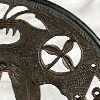
FS: Tachi - Naminohira, Early Muromachi, NBTHK Hozon
Marius replied to Jussi Ekholm's topic in For Sale or Trade
@drbvac @JakeNYC Gentlemen, I think you are both in perfect agreement. This is a highly attractive sword at highly attractive price, and it is suitable for seasoned as well as for new collectors. I like it so much in fact, that I would grab it, were I not hampered by a rather substantial home renovation (costs have skyrocketed). @Jussi Ekholm Fantastic offering, Jussi. I think this hasn't sold yet because of summer holidays. I will drop you a PM. Really great sword. -
http://www.sho-shin.com/sai21.htm http://www.sho-shin.com/sai23.htm Nami-no-hira is also written as Namihra. As for the smith, from Markus Sesko's Index: YASUTOSHI (安俊), Ōei (応永, 1394-1428), Satsuma – “Naminohira Yasutoshi” (波平安俊), Naminohira school, according to tradition the son of Yasumitsu (安光), ayasugi-hada in combination with a suguha Hope this helps
-
Gents, Once again, it was confirmed that dealing with established sellers who post their items here on the NMB is the best thing to do. I have bought a tanto from @Brano, and besides the fact that the sword is lovely, the execution of the deal was flawless, and the communication a real pleasure. Thanks a lot Branislav!
- 1 reply
-
- 10
-

-


